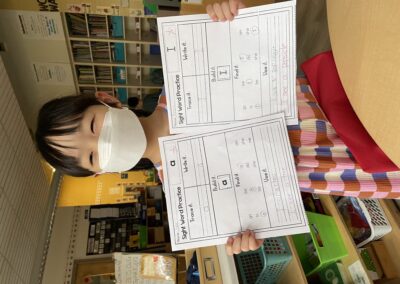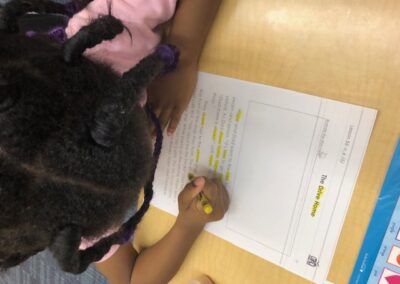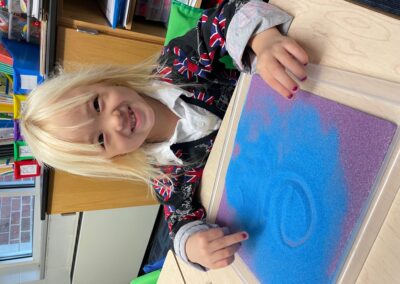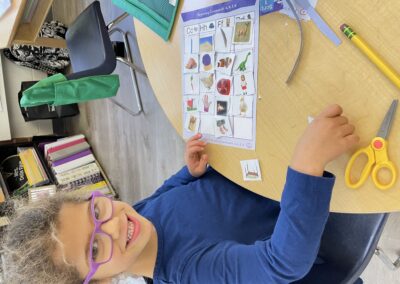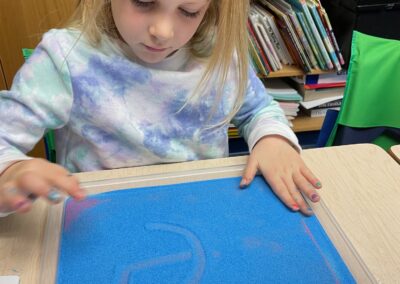Word Study is a lot more than spelling. In kindergarten, first, and second grades, students learn to read with fluency and
write with clarity through developing their phonemic awareness, phonics, and vocabulary skills in daily Word Study
lessons. Word Study is an exciting and important part of the day as students work in small groups and partnerships in
hands-on, multisensory lessons that develop critical language skills.
In Kindergarten, students develop an understanding of the alphabetic principle, learning how letters and groups of letters
represent sounds. Kindergartners classify objects and pictures, noticing that the /sh/ in ship sounds different from the /ch/
in chip and that muffin and magic both start with letter “M”.
Building on this knowledge, first graders learn to read and write longer words by looking at patterns and parts of words,
including digraphs and blends. Students compare and contrast words by vowel pattern, noticing that the /a/ in cap has a
different sound and spelling than the /a/ in cape. Students work on integrating their new learning about words into their
reading and writing with a focus on writing clearly and reading with fluency.
This understanding deepens in second grade when students apply their knowledge of vowels and syllable patterns to
further support spelling and broaden vocabulary. Second graders use vowel patterns to break words into syllables to read
and spell, noticing that boat, crow and globe all show different spellings of the long o sound and that pail and pale have
different meanings.
Learning to become a fluent reader and writer takes time and encountering tricky words is an important part of the
process. Here are some ideas to support your child at home if they “get stuck” on a word:
● When your child is trying to read or spell an unfamiliar word, give them time to try it first.
● Remind your child to look closely at letters and think about sounds.
● If your child says a word incorrectly when reading, point out the letters or parts of the word they know.
● If they are unsure how to spell a word, encourage them to use all they know about letter sounds and patterns to
spell the word.
● After they try it, show them how to read or spell the word by connecting the sounds to the letters.

